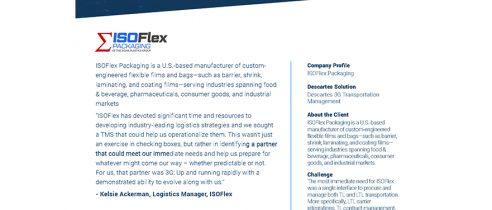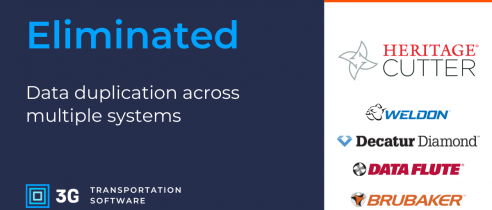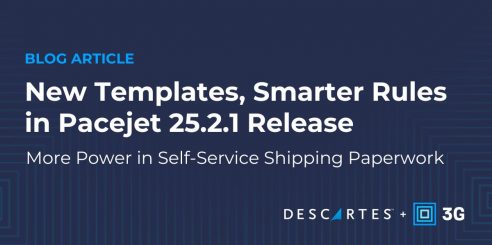If your team still prints bills of lading, scans signatures, and emails PDFs to carriers, you’re adding small cracks into a process that depends on precision. The move to electronic bill of lading (eBOL) workflows is about more than going paperless. It’s an operational evolution that keeps information accurate from dock to delivery and takes pressure off your team during every handoff. eBOLs replace manual paperwork with structured, digital data.
Read on to learn how eBOLs simplify shipping operations, where the biggest gains show up first, and what it takes to start with minimal disruption.

Key Takeaways
- eBOL stands for electronic bill of lading, a standardized digital record that replaces traditional forms.
- eBOL adoption helps shippers reduce manual entry, avoid lost or mismatched documents, and speed up carrier pickups.
- BOL software comes with most Transportation Management Systems (TMS), so you can digitize with minimal setup.
- eBOLs reduce freight fraud and cargo theft risk by acting as a single, verifiable source of truth—digitally validating shipment contents and carrier identity to prevent document tampering or misdirection.
What Electronic Bills of Lading (eBOL) Means for Shippers
Before diving in, it’s worth clarifying the eBOL meaning, why it exists and what it changes in daily shipping. In shipping, every process connects back to the bill of lading. It’s your shipment record, your proof of pickup, and your contract with the carrier. When that document exists as a PDF or printed form, it can become a bottleneck—it slows decisions that should happen in seconds.
The eBOL automates this process to save time and ensure accuracy. It turns that same information into structured data that your TMS and other carrier systems can share directly. No printing, no scanning, no manual updates.
Why Going Digital Matters Now
Most carriers are already connected to digital networks that support eBOL. The National Motor Freight Traffic Association, Inc. (NMFTA) Digital LTL Council has published clear industry standards for how shippers and carriers exchange eBOL data. The ecosystem is ready. What’s missing in many operations isn’t technology.
The real barriers are behavioral and organizational. Many teams hesitate to start because they expect integration challenges, competing priorities, or legal uncertainty. But those hurdles are shrinking fast. eBOL adoption is climbing as more carriers, brokers, and platforms align on common standards and proven workflows.
Take steps now. Waiting for perfect conditions means watching competitors build digital fluency and stronger carrier relationships first.
How eBOLs Improve Daily Operations
When you adopt electronic bills of lading, you improve how information moves through your network and equip yourself to act fast in the face of disruption. The end-to-end impact is powerful.
Faster revenue cycles. When shipment data flows cleanly into accounting, invoices go out sooner and disputes are easier to resolve.
More reliable carrier performance. Digital handoffs reduce idle time at pickup and create shared accountability when schedules shift.
Stronger customer reporting. Verified timestamps and digital signatures give customers clear visibility into delivery performance.
Better team bandwidth. With a lighter manual load, planners and coordinators can focus on fast exception management and real-time issue resolution.
The ultimate payoff shows up in predictability. Your team can plan with confidence and deliver consistency that leadership trusts.
How eBOLs Help Prevent Fraud & Cargo Theft
Paper BOLs are easy targets for manipulation—fraudsters can alter shipment details, falsify carrier information, or use forged documents to stage fictitious pickups. eBOLs close that gap by creating a secure, digital record that all parties access from the same source. Every shipment detail and carrier credential is verified within the system, preventing unauthorized edits or lookalike paperwork. By serving as a single source of truth, eBOLs help protect freight integrity, reduce theft exposure, and strengthen trust across the shipping network.
Digital validation through eBOL systems—particularly when integrated with carrier vetting, EDI, and GPS—dramatically reduces these vulnerabilities by ensuring the shipment and driver data can’t be altered once verified in the TMS or carrier network.
Getting Started Without Disruption
You can start small. Choose one lane, one carrier, and one process owner to prove the value before scaling.
- Pick a carrier already using eBOL. Most national LTL carriers are already set up. Reach out to a partner that is historically responsive to data sharing or pilot programs.
- Choose a stable lane. Select a route with predictable volume and consistent pickup patterns. The steadiness helps you clearly compare eBOL results to your manual baseline.
- Connect through your TMS. Your TMS provider should be able to enable the eBOL connection in a few clicks. For example, Descartes 3G TMS supports eBOL through existing carrier integrations, so the process feels like an upgrade, not a rebuild.
- Pilot with a single dock team. Equip one shift or location with access to your BOL software. Keep paper copies available at first but use them only as backup. The goal is to build comfort, not flip a switch.
- Track what changes. Measure pickup time, invoice accuracy, and document chase rate. The early signals of success are usually fewer phone calls and faster billing.
Once your pilot runs smoothly, expanding is easy. Each additional carrier or lane fits into the same framework. Scale at your own pace.
Conclusion
Paper BOLs were built for a slower, simpler network. Today’s shipping environment demands more. eBOLs give you the accuracy and speed you need, without changing how freight actually moves.
It’s a small upgrade that pays for itself fast. For operations teams under constant pressure to do more with less, this is the kind of change that sticks.
Start your eBOL rollout in Descartes 3G TMS
One lane is all it takes to see how eBOL simplifies your operation.








